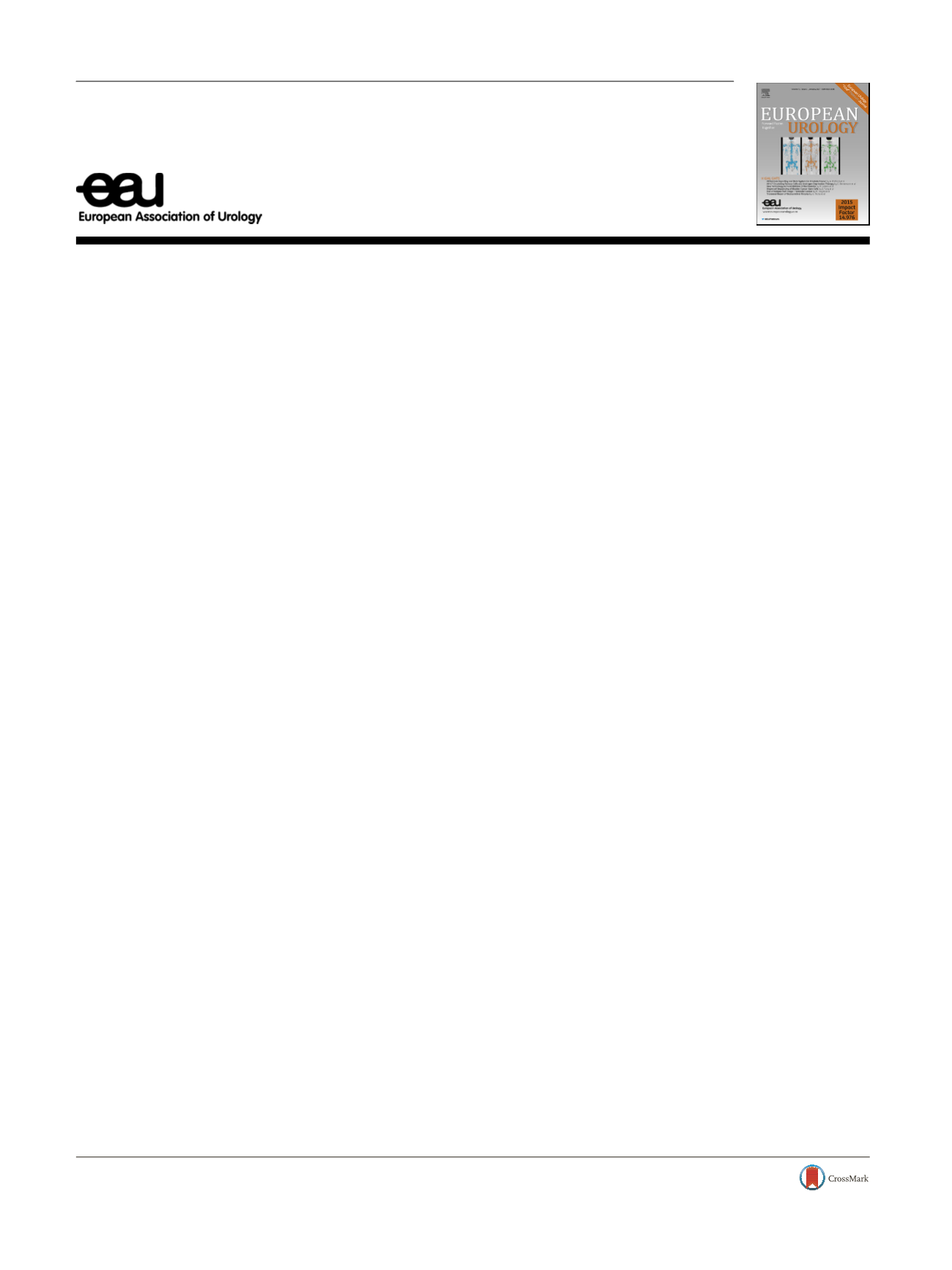

Platinum Priority – Editorial
Referring to the article published on pp. 729–737 of this issue
Patterns of Care for Prostate Cancer Patients: Predictors of Care,
But For Whom?
Stephen B. Williams
a ,Brian F. Chapin
b , *a
Department of Surgery, Division of Urology, The University of Texas Medical Branch, Galveston, TX, USA;
b
Department of Urology, The University of Texas
MD Anderson Cancer Center, Houston, TX, USA
Preferred treatment options for localized prostate cancer
include active surveillance for patients with low-risk
disease, with surgery and radiation therapies reserved for
intermediate-risk and high-risk disease
[1,2]. Aside from
tumor characteristics, determinants such as age, race/
ethnicity, socioeconomic status, and insurance have impli-
cations for the treatments administered
[3–5]. In this issue
of
European Urology
, Gray et al
[6]present temporal trends
in prostate cancer care using the National Cancer Database
to identify trends in care and predictors of receipt of
prostate cancer care. Specifically, the authors examined
temporal effects of race/ethnicity, insurance, and socioeco-
nomic status on treatment type during the study period.
They differentiated observation versus treatment (radical
prostatectomy [RP], brachytherapy, or external-beam
radiotherapy) according to the National Comprehensive
Cancer Network guideline on stratification for disease risk.
While the authors should be commended for critically
evaluating determinants for observation versus treatment
according to disease risk, there are a few to discuss. First, the
use of observation for clinically localized prostate cancer is
not guideline-recommended for low-risk prostate cancer. In
the present analysis, patients in the observation category
probably include those who may be on watchful waiting or
active surveillance. It should be cautioned that there
remains a distinct difference between watchful waiting
and active surveillance, since the latter entails detailed
monitored follow-up, with treatment initiated at set
determinants. Furthermore, active surveillance has been
recommended for men diagnosed with low-risk prostate
cancer
[1,2]. However, the incidence of overtreatment of
low-risk disease is well known and still prevalent, as
depicted in this study, with trends for greater RP utilization
for low-risk disease
[7,8]. In addition to determining
predictors of increased utilization of active surveillance
for indolent prostate cancer, the quality of surveillance has
also been questioned
[9,10] .Similar to the present study,
previous research using SEER-Medicare linked data
revealed significantly lower utilization of watchful wait-
ing/active surveillance
[11]. Moreover, in another study
evaluating the quality of active surveillance, when compar-
ing patients undergoing active treatment, those who
underwent watchful waiting/active surveillance were less
likely to undergo prostate-specific antigen testing and
attend office visits within the 2 yr following diagnosis
(
p
<
0.01)
[12] .Of the 3656 patients undergoing watchful
waiting/active surveillance, only 166 (4.5%) were on ‘‘active
surveillance’’ (according to the a priori definition). This
means that the current utilization of observation for low-
risk patients reported in the present study as 21.3% at best
does not accurately represent active surveillance utilization
patterns; it is likely that utilization is far less and under-
determined from the present data set.
Interestingly, RP utilization increased independent of
risk stratification, a surrogate for tumor biology. Further-
more, RP use increased in patients with high-risk disease
during the study period, when historically radiation with
androgen deprivation therapy was largely administered.
With the introduction of robotic prostatectomy and further
data supporting the utility of surgery as the initial step in
therapy among patients with high-risk disease, these
findings may not be surprising. However, even patients
E U R O P E A N U R O L O G Y 7 1 ( 2 0 1 7 ) 7 3 8 – 7 3 9available at
www.scienced irect.comjournal homepage:
www.europeanurology.comDOI of original article:
http://dx.doi.org/10.1016/j.eururo.2016.08.047.
* Corresponding author. Department of Urology, The University of Texas MD Anderson Cancer Center, 1515 Holcombe Blvd, Houston, TX 77030, USA.
Tel. +1 713 7923250; Fax: +1 713 7944824.
E-mail address:
bfchapin@mdanderson.org(B.F. Chapin).
http://dx.doi.org/10.1016/j.eururo.2016.10.0200302-2838/
#
2016 European Association of Urology. Published by Elsevier B.V. All rights reserved.
















